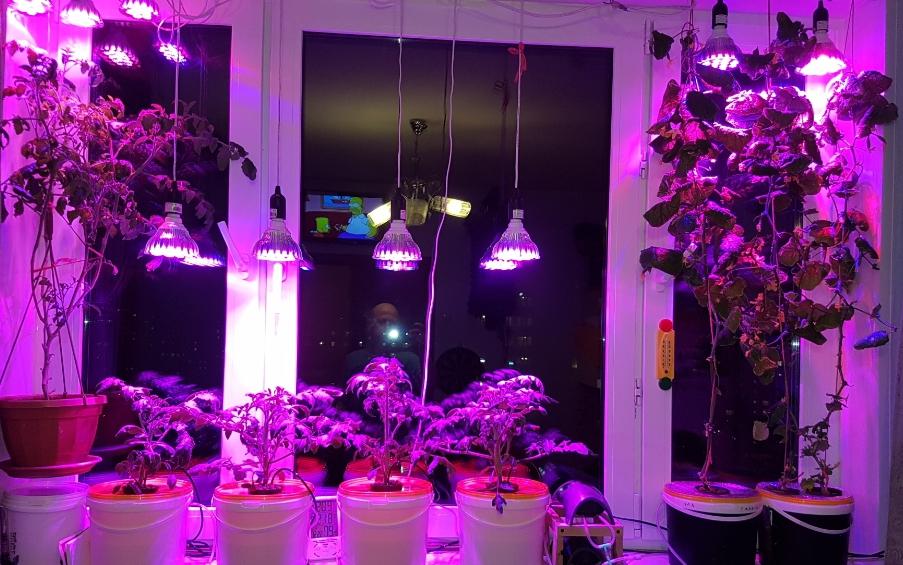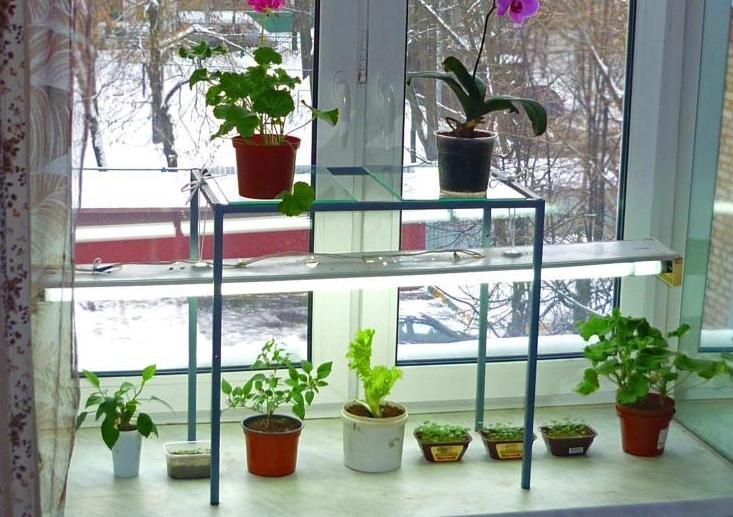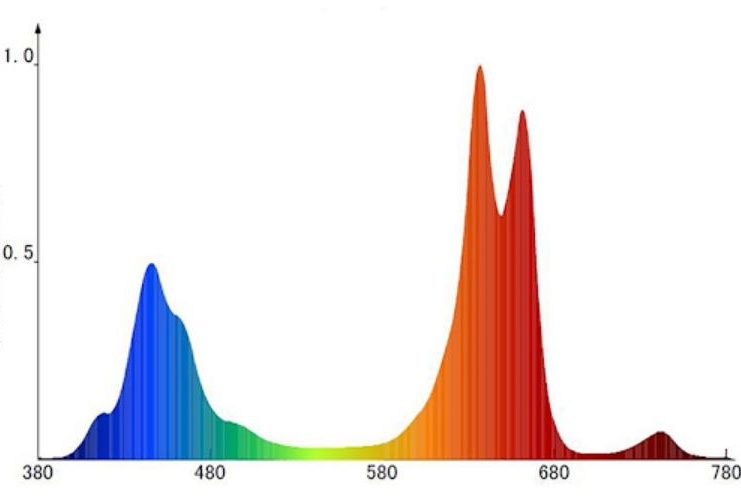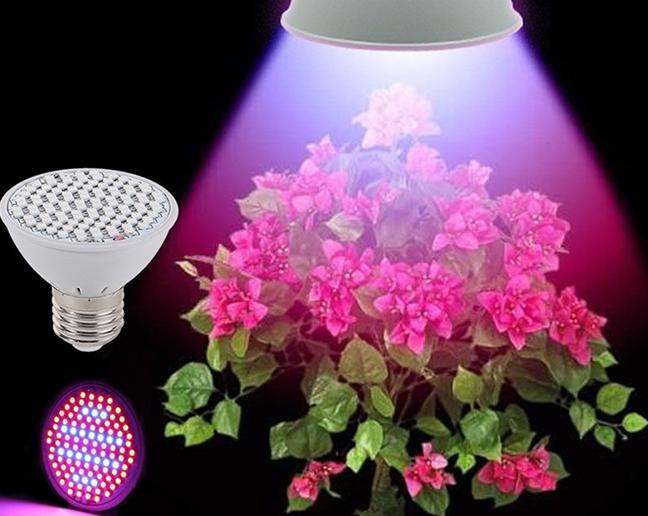How to choose a phytolamp for growing plants
To choose a phytolamp for houseplants, it is worth taking into account the peculiarities of a particular crop. In addition, it is necessary to take into account the technical performance of the equipment, power consumption, the location of fixtures, the shape of the diffusers and other important points.
Lighting requirements
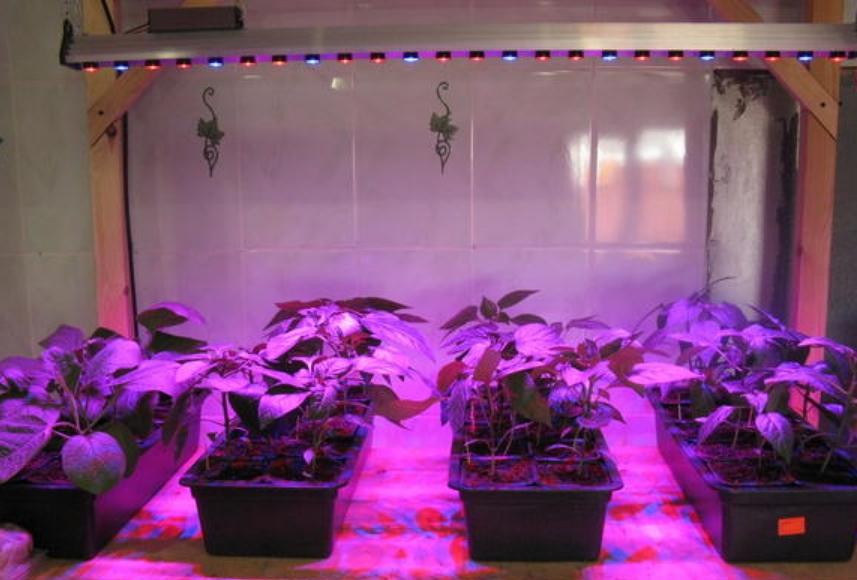
If you require extra lighting for your plants, you cannot simply take lights that are at hand and use them for this purpose. A number of requirements must be fulfilled:
- Radiation of a certain spectrum is required for normal plant growth and development. Most often blue and red wavelengthsThis is why special equipment is used and not the conventional light bulbs used for room lighting.
- The brightness of the light can vary for different crops, so you should study the recommendations for the particular plant before choosing. Too much light is just as undesirable as not enough lightTherefore, the set values should not be violated too much.
- The timing of the backlighting is another thing to consider. It depends on the natural light and the preferences of the crop. Artificial light is best used as a supplement к naturalUse only lamps in cases where there is no other option.The supplementary light on the window allows you to increase the length of the daylight hours for indoor plants.
- The equipment must be safe, especially if it is constantly running without supervision. It is better to choose low-voltage lamps, which consume the least amount of electricity, even when short-circuited are not dangerous and can not cause fatal injuries to humans or pets.
By the way! When using low-voltage equipment, you need to install an additional power supply.
General tips for choosing phytolamps
To choose equipment with the right characteristics, it is necessary to consider a few simple recommendations. Even those who have never touched the subject can handle it:
- Lighting area. It depends on the power of the light source and the shape of the diffuser. Hang lamps without an element that directs the light is not worth it, because most of it will be spent to no avail. Therefore, it is necessary to determine in advance the shape and size of the plafond, which will suit the used containers and the number of plants to be illuminated.
- Spectrum peaks in the lamp. For plants, the most important are blue (440-460 nm) and green (640-660 nm), they are responsible for the growth rate of plants, as well as the normal process of photosynthesis and metabolism. But the other colors should also be there in some quantity, they are especially important if plants are growing without natural light. In this case, it is best to use full spectrum equipment, which can serve as a substitute for natural sunlight.This is what the spectrogram on the package with a phytolamp looks like, it is not difficult to understand the indicators.
- Energy Consumption. The more economical the lamps, the lower the electricity costs and the cheaper the cost of doping. It is better to buy more expensive but economical lamps than cheap ones that consume a lot of electricity.
We must remember what kind of light is best for the plants - the closest to natural light has a light temperature of 6200 to 6400 Lm.
The video will tell you more about the spectra of phytolamps luminescence.
Types of phyto-lights
Several types are used, each has pros and cons, which must be taken into account:
- Incandescent bulbs are the worst option, it does not give normal light and consumes the most electricity. In addition, conventional bulbs are very hot when working, so they are located at a high height, which reduces the efficiency. They give mainly red light, blue light is almost absent.
- Halogen can provide good brightness and the desired spectrum, their light is close to the natural sunlight, so they are suitable for houseplants. But the bulb gets very hot, which is dangerous for the plants, and the lamps themselves consume a lot of electricity, the cost will increase markedly in the long run.
- Fluorescent are well suited for plants, if you choose the option with the right colors of the spectrum. The light is bright and high quality, although it has a flicker, the lamps can be in the form of tubes, and compact, under standard sockets. The surface is almost not heated, the power consumption is small. The main drawback is the mercury vapor in the bulb, which makes it necessary to handle it carefully.
- Phytolamp LED for plants on the windowsill is the best, because it consumes little electricity and gives light of different brightness, which allows you to find a suitable solution for any plant. Also, LEDs heat little and operate from a low voltage, which allows you to make the system safe.
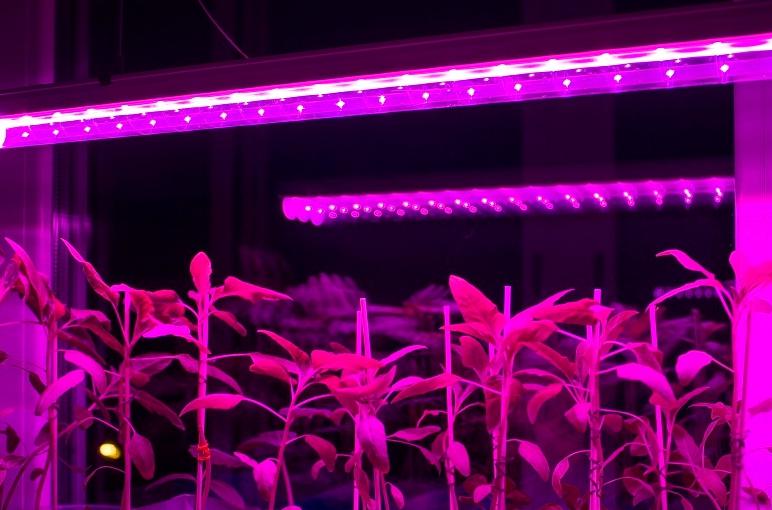
By the way! It is necessary to buy not only the lamp, but also a rack for its installation.
The choice of LED phytolamp
It is better to use the LED version as the safest and most economical, when choosing to pay attention to such moments:
- What crop will grow under the lamps. From this depends on the optimal spectrum and the height of the stand, on which the lamp is mounted.
- The shape of the container. The type of plafond depends on this, it can be round, square or rectangular. The better the fit of the plafond to the container, the more rationally the light is used.The round plafond is great for lush single plants.
- Calculating the power of LED lighting. First of all, you need to know the rate of illumination for a particular crop, usually it is equal to 100-150 watts per square meter. Then the area of the container is determined and the height of the location is calculated. Based on the result, it is not difficult to calculate how many of these or other lamps are needed.
- Selection of the power supply, it is better to buy it after the calculation of the power of the lamps, as it is selected for specific conditions. It is better to take a version with a power reserve of 30%.so it does not work under full load.
Remember that as the height of the spotlight above the plants increases, the light scatters over a larger area, so the power must be increased by 20-30%.
Are these lamps bad for your eyesight?
Many people believe that plant bulbs are dangerous to humans because of their radiation. But in fact, this is just speculation, because the equipment is not much different from standard equipment. It can emit ultraviolet light, but its spectrum is so soft that it does not harm people. A blue and red radiation can only cause eye discomfort, it is not able to harm them.
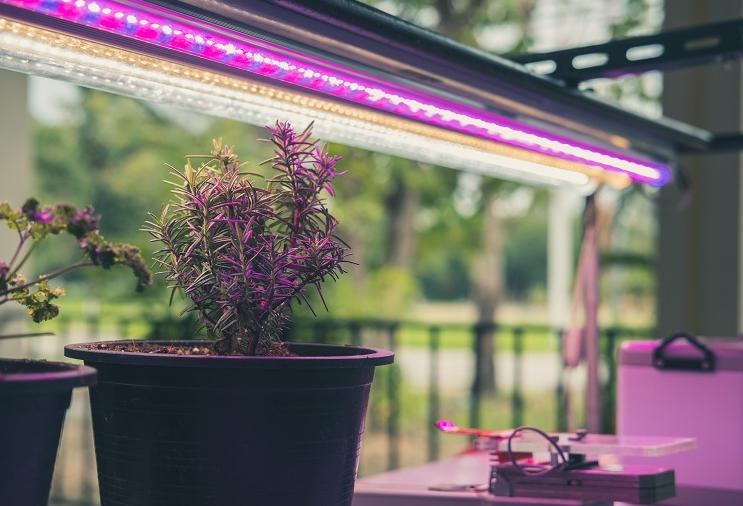
Since the light is directed to the plant by a reflector, it almost does not get into the room, which eliminates any problems. The only dangerous situation that can occur is damage to the bulb in the fluorescent lamp and mercury vapor entering the room.
To conclude the video: A test of the six spectrums of phyto bulbs on blooming.
Choosing a phyto lamp for houseplants is not difficult if you use the recommendations from the review. It is better to buy LED equipment operating from 12 V voltage, as it is the safest and most economical. When choosing, consider the type of plant, the area of light and the growing conditions in the house or other room.
